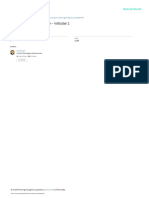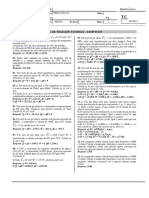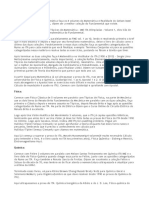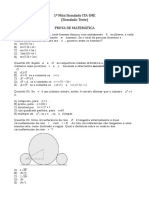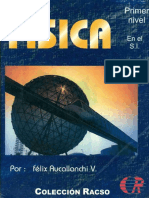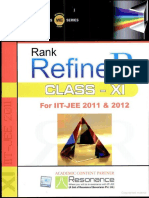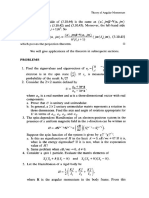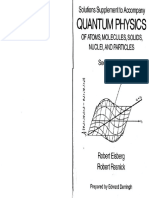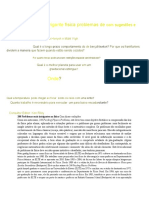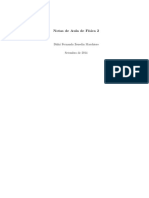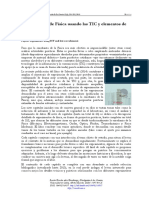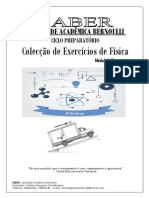100%(9)100% acharam este documento útil (9 votos) 4K visualizações431 páginasIrodov
Soluções para o livro de problemas do irodov
Direitos autorais
© Attribution Non-Commercial (BY-NC)
Levamos muito a sério os direitos de conteúdo. Se você suspeita que este conteúdo é seu,
reivindique-o aqui.
Formatos disponíveis
Baixe no formato PDF ou leia on-line no Scribd
Solutions to
LE. Irodov’s
Problems in
General Physics
Volume I
Mechanics e Heat e Electrodynamics
SECOND EDITION
ABHAY KUMAR SINGH
Director
Abhay's I.1,T. Physics Teaching Centre
Patni
a \
cBSsS
CBS PUBLISHERS & DISTRIBUTORS
4596/1A, 11 DARYAGANMJ, NEW DELHI - 110 002 (INDIA)�Dedicated to
my Teacher
Prof. (Dr.) J. Thakur
(Department of Physics,
Patna University,
Patna-4)
ISBN : 81-239-0399-5
First Edition : 1995
Reprint : 1997
Second Edition : 1998
Reprint : 2000
Reprint : 2001
Reprint : 2002
Reprint : 2003
Reprint : 2004
Reprint : 2005
Copyright © Author & Publisher
Alll rights reserved. No part of this book may, be reproduced or
transmitted in any form or by any means, electronic or mechanical,
including photocopying, recording, or any information storage and
retrieval system without permission, in writing, from the publisher.
Published by S.K. Jain for CBS Publishers & Distributors,
4596/1A, 11 Darya Ganj, New Delhi - 110 002 (India)
Printed at :
India Binding House, Delhi - 110 032�FOREWORD
Science, in general, and physics, in particular, have evolved out of man’s quest to know beyond
unknowns. Matter, radiation and their mutual interactions are basically studied in physics.
Essentially, this is an experimental science. By observing appropriate phenomena in nature one
arrives at a set of rules which goes to establish some basic fundamental concepts. Entire physics
rests on them. Mere knowledge of them is however not enough. Ability to apply them to real
day-to-day problems is required. Prof. Irodov’s book contains one such set of numerical
exercises spread over a wide spectrum of physical disciplines. Some of the problems of the book
long appeared to be notorious to pose serious challenges to students as well as to their teachers.
This book by Prof. Singh on the solutions of problems of Irodov’s book, at the outset, seems
to remove the sense of awe which at one time prevailed. Traditionally a difficult exercise to
solve continues to draw the attention of concerned persons over a sufficiently long time. Once
a logical solution for it becomes available, the difficulties associated with its solutions are
forgotten very soon. This statement is not only valid for the solutions of simple physical problems
but also to various physical phenomena.
Nevertheless, Prof. Singh’s attempt to write a book of this magnitude deserves an all out
praise. His ways of solving problems are elegant, straight forward, simple and direct. By writing
this book he has definitely contributed to the cause of physics education. A word of advice to
its users is however necessary. The solution to a particular problem as given in this book is
never to be consulted unless an all out effort in solving it independently has been already made.
Only by such judicious uses of this book one would be able to reap better benefits out of it.
As a teacher who has taught physics and who has been in touch with physics curricula
at 11.T., Delhi for over thirty years, I earnestly feel that this book will certainly be of benefit
to younger students in their formative years.
Dr. Dilip Kumar Roy
Professor of Physics
Indian Institute of Technology, Delhi
New Delhi-110016.

